|
|
Post by MartinT on Jul 8, 2014 6:32:33 GMT
A regenerator is a device which takes mains power as its power supply in order to generate a perfect new output waveform with which to power your equipment. This is not the same thing as filters, which attempt only to remove nasties such as high frequency interference from the power. A filter cannot 'insert' missing parts of the waveform, so only achieves half the job of a true regenerator.
The idea behind a regenerator comes from the theory that your ultimate signal driving your speakers can only be as good as the power rails in each item of equipment, which themselves can only be as good as the incoming mains power. Think of it as the output stage modulating 'perfect' power into a waveform. The less perfect that power, the more inaccurate becomes the output waveform. Many models are also capable of generating a lower output impedance than the incoming mains, through storing a large reserve of power, creating the effect of very stiff power supplies throughout the system.
So what we are trying to achieve, using my home's power as an example, is to use the incoming power which looks like this (approaching a sawtooth waveform)...
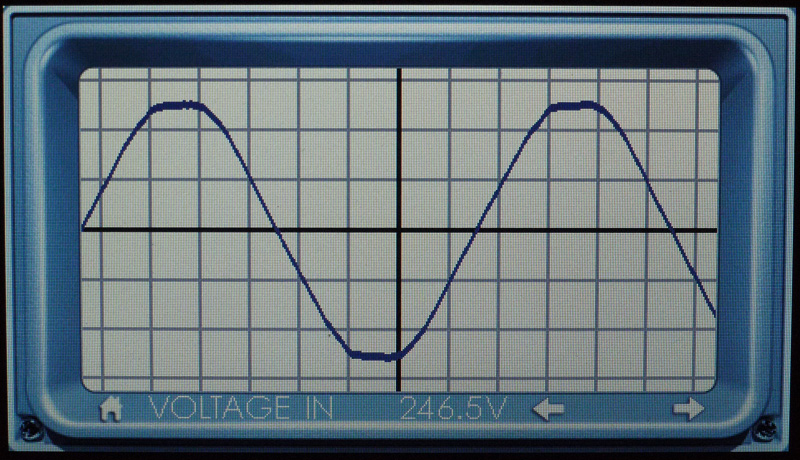
...into this (a nice near-perfect sinewave)...
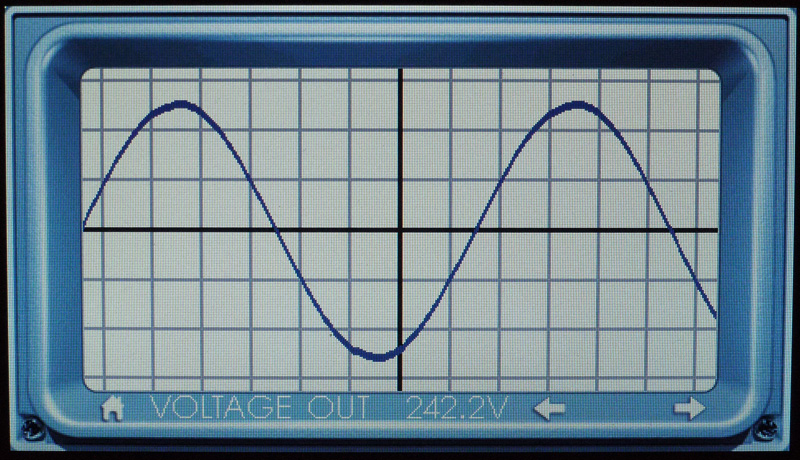
The THD (Total Harmonic Distortion) of my incoming waveform measures 2.6%, the outgoing feed into the system is 0.1%.
This is the 'work' the regenerator has to do, by adding or subtracting signal, in order to convert the first into the second waveform...
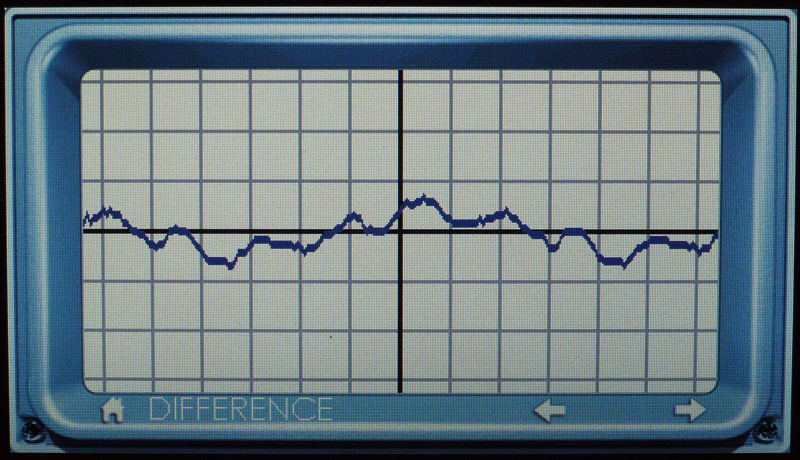
Different regenerators feature different capabilities and extras. Some of the early models (such as the PS Audio P-300) could only generate low power (300W in this case) and were only suitable for powering source components. They also became very hot, due to their way of recreating the entire waveform using a class AB power amp. Later models are much more efficient as they 'rebuild' the original waveform by using a smaller floating amp to add or subtract just what is necessary to make the curve perfect again (see third waveform, the difference signal). Many current models are rated to be able to power an entire system - as long as you're not running a big Krell or similar power hungry amp.
Still more models allow a setting to focus on either lowest distortion of the waveform, or highest level of regulation (power supply stiffness). Finally, the PS Audio range features Multiwave, which leaves sinewaves behind completely and creates a waveform with a flatter peak in order to be able to pump more energy into the equipment's power supply in each charge cycle of the 50/60Hz waveform (100/120 times per second).
This is Multiwave mode 6, the most extreme waveform and the setting I use in my system. Compare with the standard sinewave above...
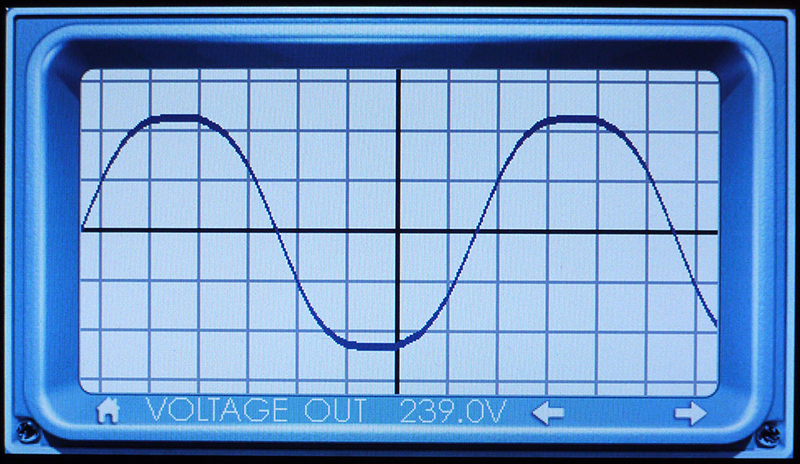
The PS Audio Power Plant P10 can regenerate 1.5kW of clean power
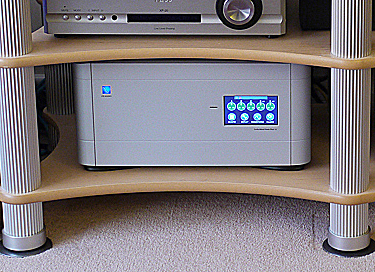
So what does regeneration bring to your system? I am on my third model, having previously owned a PS Audio P-300 and PPP. They have progressively given me a much lower noise floor (so that the music appears to emerge from dead silence), deeper and wider soundstage with far better ambience cues (so that I can hear further into the mix), and potent and very tight, dynamic bass with the feeling of limitless headroom.
Owners of other regenerators, please tell us your stories of what model you use and what they have brought to your system. |
|
|
|
Post by pinkie on Jul 8, 2014 7:35:12 GMT
Martin, you're teasing me! That is a lovely sinewave you have there, but all the HiFi you have downstream of it sets about chopping the tops and bottoms off even more than in your original mains, and smoothing out the bits in the middle. In particular, I would venture to suggest that rather fine power amp of yours, which has now caused me over 30 ebay searches for Chord 1200, but I WILL BE STRONG, ought not to give a Shane Lonegrin signature what shape the incoming mains is (within reason). At Christmas, due to a 4 day power cut, and the generosity of an ex-wife I ran my system off a petrol generator in one of the stables, which both gave me an alternative waveform, and complete freedom from "mains dirt" for about a 10 mile radius (not a microwave or skybox smps in sight), and I can't honestly say it was any different (except when the washing machine cut in and the lights dimmed to the accompaniement of sounds of strain from the stables). I wasn't carrying out a careful audiophile evaluation with studious A:B tests (the village was under 6 feet of water, and we were busy helping refugees) but I can't say completely changing the mains made one jot of difference to the sound And before you say it again Gordon, I am not deaf. (Pardon?)  |
|
|
|
Post by MartinT on Jul 8, 2014 8:17:07 GMT
In particular, I would venture to suggest that rather fine power amp of yours, which has now caused me over 30 ebay searches for Chord 1200, but I WILL BE STRONG, ought not to give a Shane Lonegrin signature what shape the incoming mains is (within reason). I know Richard, it makes no sense that an amplifier with a switched-mode power supply which chops it all up would give a fig. However, not only does it notice, but the P10 makes a bigger difference to the performance of the Chord than any other component in my system! I put it down to using the high current outlet, high regulation mode and the superbly low output impedance of the P10. Whatever, the Chord loves it.
Maybe Mike will show up in a moment to corroborate as he has the same regenerator and power amp.
|
|
|
|
Post by pinkie on Jul 8, 2014 8:31:51 GMT
I can see I am going to have to take Mike up on his invitation for Sunday afternoon tea and tiffin' one of these fine days, and have my belief system changed  |
|
|
|
Post by Dr Bunsen Honeydew on Jul 8, 2014 8:56:26 GMT
Well there was a company in the computer industry called Power Inspired who made a 1500w unit for £400 sold direct to the public (like loads of computer stuff) that does the same as your one but for much less money. Then some hi-fi guys cottoned on to it and started talking about it on the forums. So some middle men, *name removed*, convinced them they would sell more with the hype and promotion of middle men behind them, so they now cost £650. Sad but still a bargain in comparison to the P10.
The units definitely work and interestingly not only clean up the mains but seem to consistently open up the music. Interestingly in parallel there is another way of basically getting the same end result called balanced mains. The way mains is delivered to your house is weird due to step downs from the very high National Grid line voltages to 240v via transformer taps from the 3 phase supply. Balanced mains basically converts this to a split rail supply with a centre tap (0v) as earth, so as with all signal or voltage balancing (like a noise cancelling headphone) it removes noise and distortion from the mains. This is due to the distortion and noise being present on both legs of the split rail but one side is 180deg out of phase with the other so they effectively cancel each other out, a very simple solution.
Now for me this has proved to be more effective at doing the job, but they are not exclusive to each other, and can be used in combination which seems to make things better again. I must at this point register a interest as due to being so impressed with the balanced mains method I built a 1000va one for myself and am now building them for some NVA customers, though they are not on the product list yet.
|
|
|
|
Post by danielquinn on Jul 8, 2014 8:56:44 GMT
Mains regeneration is one of those "explanations for explanations sake" hifi issues I alluded to .
There is a significant body of hifi community reporting favourable results , so for me it is filed in the investigate if you get the chance , but it should not be dismissed, despite the paucity of explanation .
however , if the P10 is worth the money I will eat my PT at scalfod . 
it as been suggested the price paid is an individuals choice . I would retort with 2 things .
No firm bar 1 , provides you with sufficient information for anybody to make an informed choice upon the price structure . If the P10 was confirmed as costing a couple of hundred quid to make , I doubt anyone would buy it .
Secondly Additionally , it is not actually an individuals choice . Individuals make choices within a socio-economic framework not of their making . The existence of £10,00 mains conditioners and £100,000 amplifiers reflects dysfunctional distribution of wealth . I would rather live in a world were Ferrari went bankrupt and reasonably priced car manufacturers thrived cause fewer people had less and more people had more . Economies function better for more people is wealth is better distributed .
|
|
|
|
Post by MikeMusic on Jul 8, 2014 9:03:08 GMT
It's bonkers what the P10 does. The P300 is a clever little box, (must sell it one day), the PPP takes that up a level, but the P10 goes up another 2-3 steps. What it does to the bass is not believable, subterranean - and the clarity as well. When I first put it in, stone cold out of the back of a car in snowy February I listened and thought it was doing something - nah must be imagining it, time to go to bed. Next day after being left on it was better and it continued to improve for a a week or two. Initially with a Naim 500. The Chord is just as happy as the Naim was. Just goes to show what a crazy world we live in. Mains regeneration for a hifi ?! You must be a headcase, cannot sound better - It does honest, by a very clear margin. 'Course I have a real P10, in black, sounds way better than Martin's poxy silver one  |
|
Marco
Rank: Trio
   Banned
Banned
Posts: 242 
|
Post by Marco on Jul 8, 2014 9:11:35 GMT
Hi Martin, Could it be that (as we know SMPS units are noisy buggers - even good ones) the P10 is filtering out that noise (generated from your Chord amp) and/or isolating it in some way from the rest of your system, thus preventing it from 'polluting' the other equipment, and so *that* is the effect (and benefit) you're hearing? Just throwing something out there for consideration  Marco. |
|
|
|
Post by MartinT on Jul 8, 2014 9:17:12 GMT
RD - yes I have now heard of the Power Inspired models but have yet to hear one. If they are proper regenerators creating sinewaves (not like many computer UPS units that generate squarewaves), then they could be very interesting indeed at that price. Perhaps someone who owns one would publish a review?
I would love to try a balanced transformer one day, with and without regenerator, having heard good things about them.
DQ - we've had the value discussion already. For the price of the P10 (I paid £4k), there was no other way I could think of to improve my system's overall performance to such a degree. Therefore, for me, it was great value for money.
|
|
|
|
Post by pinkie on Jul 8, 2014 9:26:51 GMT
Hi Martin, Could it be that (as we know SMPS units are noisy buggers - even good ones) the P10 is filtering out that noise (generated from your Chord amp) and/or isolating it in some way from the rest of your system, thus preventing it from 'polluting' the other equipment, and so *that* is the effect (and benefit) you're hearing? Just throwing something out there for consideration  Marco. There is a short answer to that question if you give it a moments thought. The beautiful clean mains would have to then come back into the noisy bugger in question. "No" is that short answer. |
|
|
|
Post by MartinT on Jul 8, 2014 9:29:34 GMT
Could it be that (as we know SMPS units are noisy buggers - even good ones) the P10 is filtering out that noise (generated from your Chord amp) and/or isolating it in some way from the rest of your system, thus preventing it from 'polluting' the other equipment, and so *that* is the effect (and benefit) you're hearing? Yes, I think that could definitely be a contributing factor, although my thought processes tell me that the very low output impedance is well enjoyed by the Chord. Thinking about it, they amount to the same thing as the low impedance will suppress the hash going back into the P10 and subsequently to other components. It also helps that the P10 has 5 different zones, each isolated from the other. |
|
|
|
Post by pinkie on Jul 8, 2014 9:32:42 GMT
If I read Mikes post correctly I see these fabulous properties are not susceptible to the tea and bun test ie - you can't pop round and have a listen with and without in the way say you could swap a cartridge, because the effect is subtle and builds up over time. You know where I'm coming from on this one. It might - but building up over time lets a whole bunch of other variables into the equation. Unlike DQ I think people should do what they like with as much money as they can get, and attempting to allocate wealth by some means other than market forces was what caused Shostakovitch such angst (and his brown tongue), and isn't for me. Much more your Adam Smith sort of guy, personally. However, before I parted with any significant amount of money for an audible improvement I would need to be able to hear it. It would be no good somebody assuring me I would be able to hear it once I had parted with the cash, got it home, made it a cup of tea and tucked it up with a blanket. Don't take it personally mains products - I don't buy cartridges and speakers that way either.  |
|
|
|
Post by Dr Bunsen Honeydew on Jul 8, 2014 9:33:44 GMT
Power Inspired do the job properly, but from a cheaper viewpoint. Best comparison will be between a class D amplifier and a class B or AB, because mains regenerators are basically just 50hz amplifiers, with your one using transformers and a class B type circuit, and the Power Inspired using switched mode supplies and class D type amplification. Now as you know this makes for much cheaper products, but IMO in the case of switched mode and class D a far more musically inferior product. BUT in the case of regeneration it makes little difference as the signal being amplified is only 50hz.
The other main difference is the way to market, too many middlemen involved in the distribution and sale of the P10, so it is a silly price.
|
|
Marco
Rank: Trio
   Banned
Banned
Posts: 242 
|
Post by Marco on Jul 8, 2014 9:43:01 GMT
Thinking about it, they amount to the same thing as the low impedance will suppress the hash going back into the P10 and subsequently to other components. It also helps that the P10 has 5 different zones, each isolated from the other.Yup, and that fact alone could explain a large part of the sonic benefit you're hearing  I know how effective the TD 'digital noise filter' is in my system, which in a roundabout way, does a similar thing. Marco. |
|
|
|
Post by danielquinn on Jul 8, 2014 9:45:43 GMT
If I read Mikes post correctly I see these fabulous properties are not susceptible to the tea and bun test ie - you can't pop round and have a listen with and without in the way say you could swap a cartridge, because the effect is subtle and builds up over time. You know where I'm coming from on this one. It might - but building up over time lets a whole bunch of other variables into the equation. Unlike DQ I think people should do what they like with as much money as they can get, and attempting to allocate wealth by some means other than market forces was what caused Shostakovitch such angst (and his brown tongue), and isn't for me. Much more your Adam Smith sort of guy, personally. However, before I parted with any significant amount of money for an audible improvement I would need to be able to hear it. It would be no good somebody assuring me I would be able to hear it once I had parted with the cash, got it home, made it a cup of tea and tucked it up with a blanket. Don't take it personally mains products - I don't buy cartridges and speakers that way either.  "the market decides these things"      ?? ??
You have of course portrayed the market as all right wingers do , in the abstract as an entity similar to a force of nature . The market decides ? how does that happen .
the market is nothing more the aggregate outcomes and unintended consequences of individual human decisions . And human decisions are not made in a vacuum, they are made with variable knowledge , cultural norms , variable resources , variable power , variable wealth and in a legal , socio-cultural framework . Change the allocation of power, resources and the legal socio framework you change the market .
What you see is not all that there is ,alas .
p.s apologies for off topic , but pinky made me do it , again .
|
|
|
|
Post by MartinT on Jul 8, 2014 9:49:17 GMT
Power Inspired do the job properly, but from a cheaper viewpoint. Best comparison will be between a class D amplifier and a class B or AB, because mains regenerators are basically just 50hz amplifiers, with your one using transformers and a class B type circuit, and the Power Inspired using switched mode supplies and class D type amplification. Now as you know this makes for much cheaper products, but IMO in the case of switched mode and class D a far more musically inferior product. BUT in the case of regeneration it makes little difference as the signal being amplified is only 50hz. Yup, that reads sensibly and sounds like a viable alternative.
The P10 is not like previous PS Audio regenerators and does not use a step-up transformer to create 240V power. It uses a clever floating amp, tracking the mains waveform and 'repairing' it with a difference signal. That's why it generates very low heat even when pushing out 400-500W.
|
|
|
|
Post by Dr Bunsen Honeydew on Jul 8, 2014 10:02:07 GMT
Thinking about it, they amount to the same thing as the low impedance will suppress the hash going back into the P10 and subsequently to other components. It also helps that the P10 has 5 different zones, each isolated from the other.Yup, and that fact alone could explain a large part of the sonic benefit you're hearing  I know how effective the TD 'digital noise filter' is in my system, which in a roundabout way, does a similar thing. Marco. Complete nonsense! A filter is a filter be it digital or analogue. Definition of a filter is it removes something even as simple as tea leaves. As a by product any form of filter increases source impedance (resistance to the thing flowing through the filter). So any mains filtration units are a complete waste of time IMO and only give dilusionary benefit. Where as balanced mains and mains regeneration do not "filter" so you lose nothing, and they actually lower the source impedance of the supply. |
|
|
|
Post by Dr Bunsen Honeydew on Jul 8, 2014 10:11:08 GMT
It uses a clever floating amp, tracking the mains waveform and 'repairing' it with a difference signal.
That is an explanation of a balancing circuit so perhaps the P10 has the benefits of balanced mains already built in. Personally I doubt it as the output of the P10 is single ended not as a balanced split rail. Martin you need to try both the Power Inspired AG1500 and a balanced supply, and then write it up. I can lend you the balanced supply for this write up if you wish. And MCRU could lend you the AG1500 if he wishes to ( he has lent you loads of other things  ) |
|
|
|
Post by MartinT on Jul 8, 2014 10:38:37 GMT
I'm game!
|
|
|
|
Post by John on Jul 8, 2014 12:35:51 GMT
I used both Balanced and regenerated mains in the past They both worked for me and to be honest not a lot between them but I did prefer my 3kva transformer over my P500.
I next re-wired my room with 10mm duel core cable and a dedicated earth and had all the wires re bound in the household (that made a big difference too)
These days due to not needing big power amps I am able to get away with mostly using batteries and use mains when I have no other option (Sub bass, Phono and TT)
|
|













 )
)